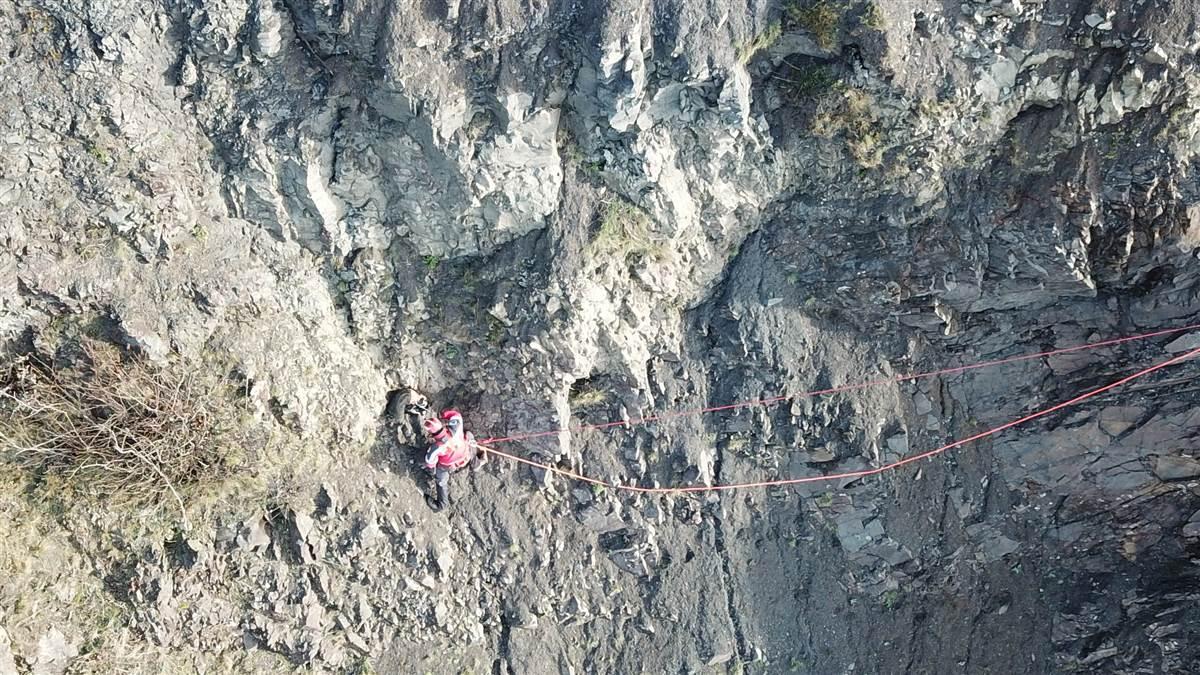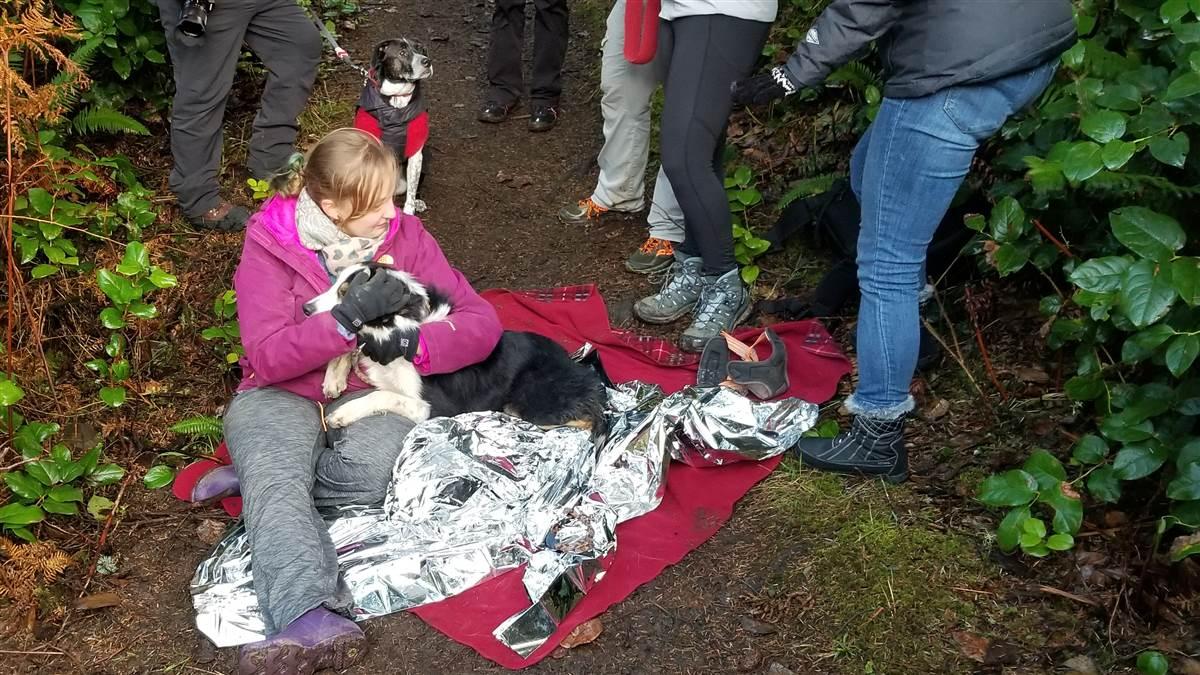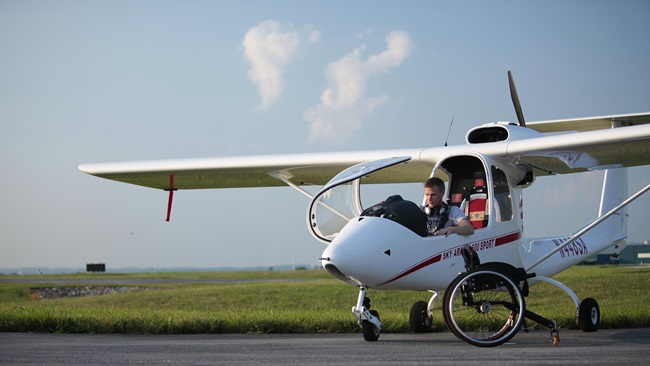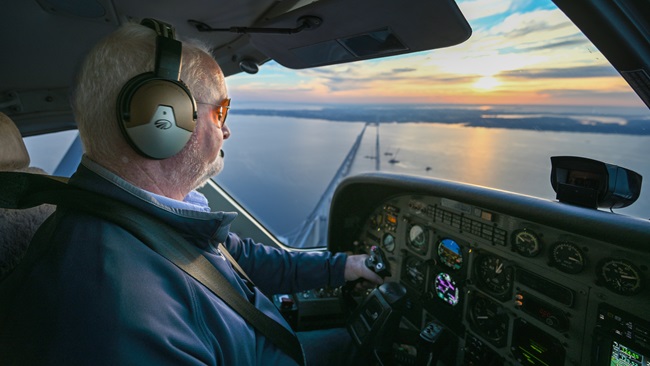Drone leads rescuers to stranded dog
A border collie named Felix spent a harrowing night perched precariously on a seaside cliff in Oregon, and might have perished but for a volunteer fire chief who is also a private pilot and drone pilot, and who provided air support.
Hamlet Fire Chief Matthew Verley responded on the morning of Dec. 26 to a desperate plea on social media posted by Felix’s owner, Sarah Stremming, who had lost sight of her beloved border collie during a Christmas Day hike along the Clatsop Loop trail in Ecola State Park in Oregon.
Verley recalled in a telephone interview that he awoke to a flood of frantic Facebook messages and soon contacted Stremming, who was back at the cliffside trail to resume her frantic search.
“Initially, she asked me to fly my airplane,” Verley said, but in sizing the situation up it became clear to him that the odds of spotting a small dog on a big cliff from a Cessna Skyhawk were a little lower than what he could do with a drone, particularly since the dog’s last known location was well-established, narrowing the potential search area significantly.

“I’ve had a business for a few years doing aerial surveying with drones for the timber industry,” Verley explained. He builds custom drones for that work, but had also purchased a pair of DJI Mavics with rescue and firefighting in mind. Given the fact there was a trail to hike, the compact and eminently portable Mavic seemed to Verley a better choice of aircraft, so he joined Stremming at the cliffside with his Mavic, and a set of goggles she could wear to watch the camera and spot her dog.
“We launched the drone and spotted the dog after just about 10 minutes of flying,” Verley recalled.
That was not the end of the story. Volunteers from three area fire departments, including Cannon Beach, Hamlet, and Seaside pitched in, and Seaside Lt. Genesee Dennis donned a harness and scaled the rock face to reach the stranded dog while Verley continued to fly his Mavic, filming the rescue in progress.
“The most difficult part about this rescue was the fact it was a dog,” Dennis told the local newspaper. “You can’t reason with a dog, and they can’t really help. At one point he slipped out of his harness, and I was basically bear hugging him, with no available hand holds.”
About three hours after Felix was spotted, and nearly 24 hours after he so nearly plunged into rocks and ocean, there was a tearful reunion, also captured on camera and aired on local television. Felix would prove to be uninjured, though dehydrated by his ordeal.
Verley said the drone was the only tool that could have done the job. The spot where Felix had wound up was not visible from above due to an overhang, and while several area agencies have highly skilled experts trained for such “high angle” rope rescues, they would have been reluctant to risk human lives rappelling a dangerous cliff without knowing if the dog was even there.
Stremming, effusive in her gratitude, turned her Facebook group that was first dedicated to finding Felix into a fundraiser for the local fire departments who teamed up to save her beloved border collie.
“We’ve ended up with many, many thousands of dollars worth of donations to our department and even an offer from a dog training foundation to buy a drone,” Verley said. “I actually turned them down” on the offer of a drone.
Verley explained that drones have not prompted universal enthusiasm among municipal and fire service leaders, and that there has been “resistance” to his push to press the technology into service for firefighting and rescue. He said he has been up against a persistent view of drones being largely toys, but the rescue of Felix may help change those attitudes. It could just as easily have been a person on that cliff, Verley said. Local firefighters are no strangers to such rescues.
Soon, he will take another run at pitching drones as tools for firefighters.
“We have a plan for the next board meeting in a couple of weeks,” Verley said. It was a very rewarding experience, he added, “especially for me, having put a fair bit of effort into using these in public service … it was pretty awesome to see people say, ‘Hey these can be used for good.’”
His rewards did not end there. Verley is also a member of the Facebook group Flights Above the Pacific Northwest, which has become popular among many general aviation pilots in the region. He shared his story with that group, and earned many kudos from fellow aviators, along with two coveted FATPNW stickers, one for his Cessna 172 and a smaller one for his Mavic.
“It’ll be cool to be able to add one to my drone,” Verley said.





